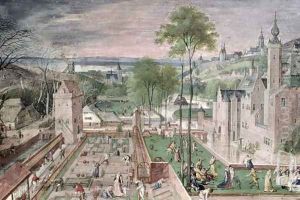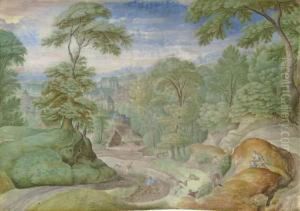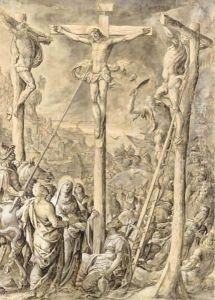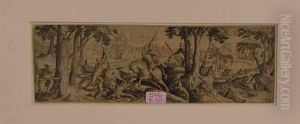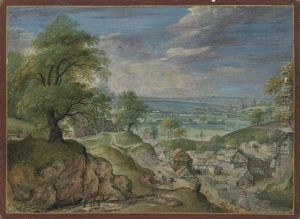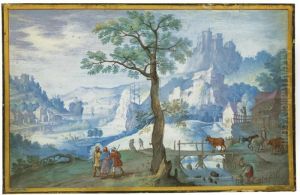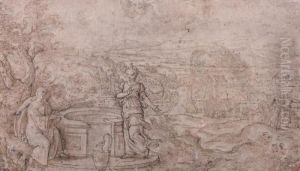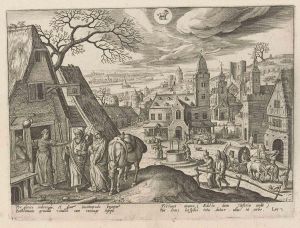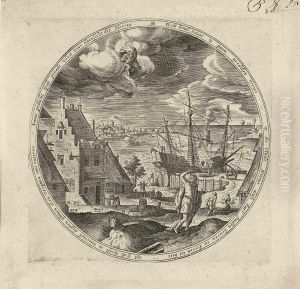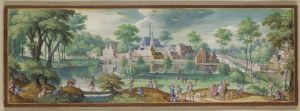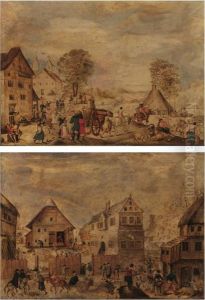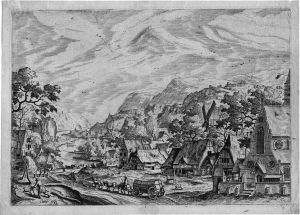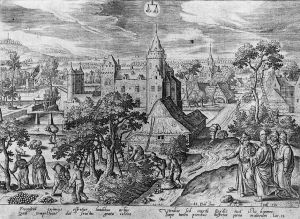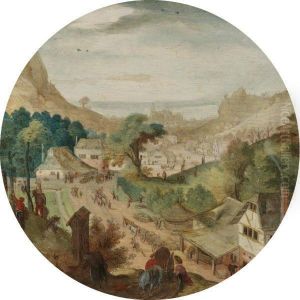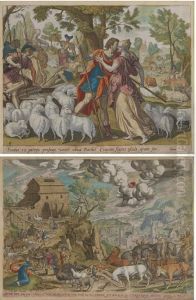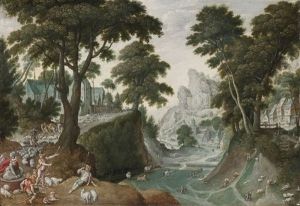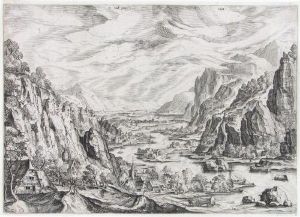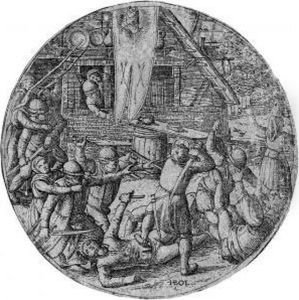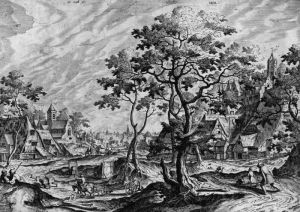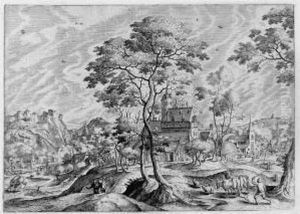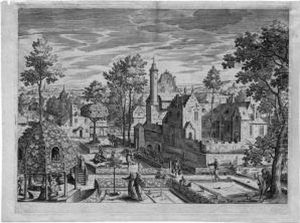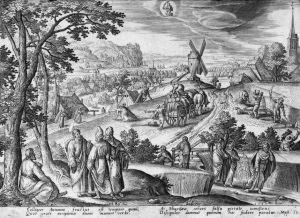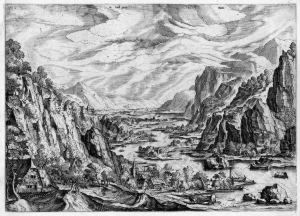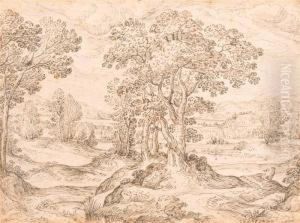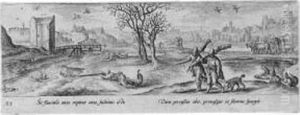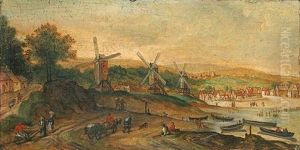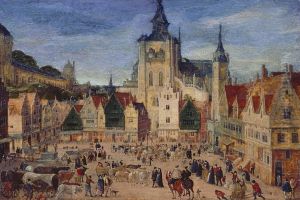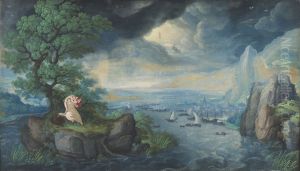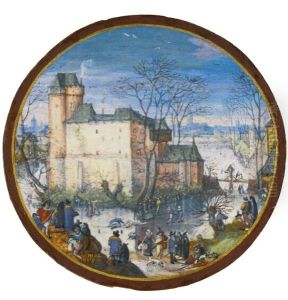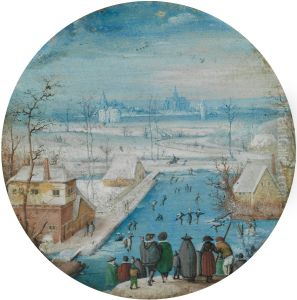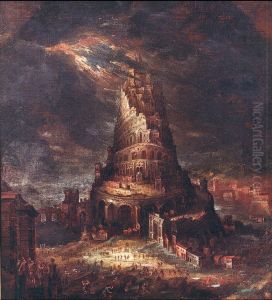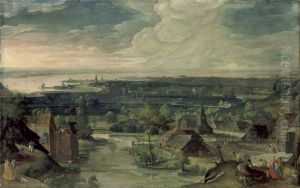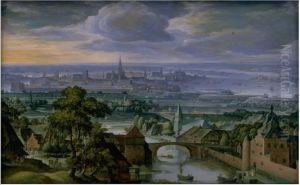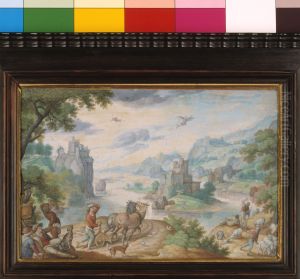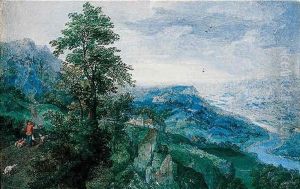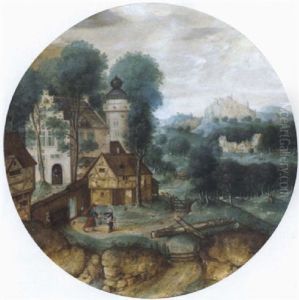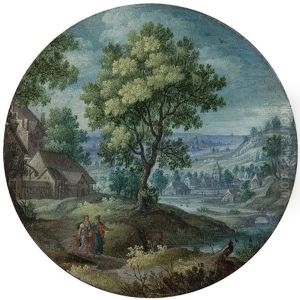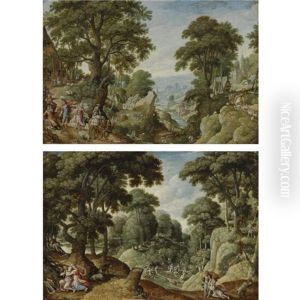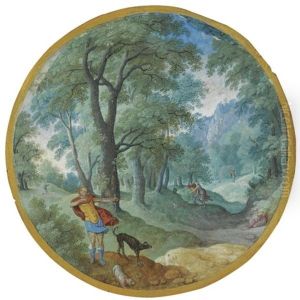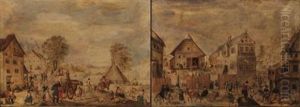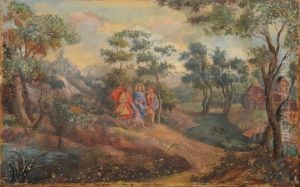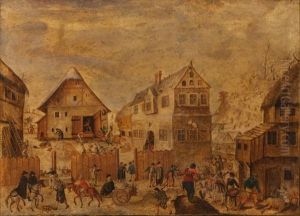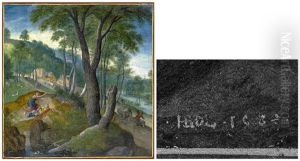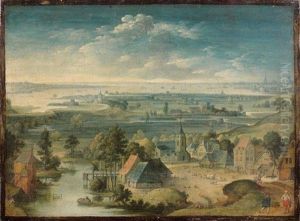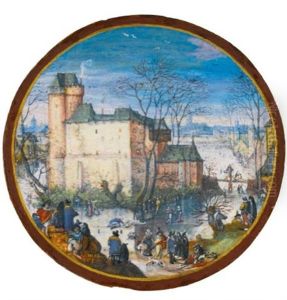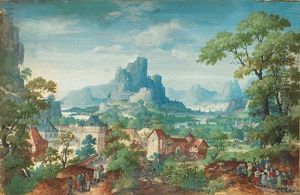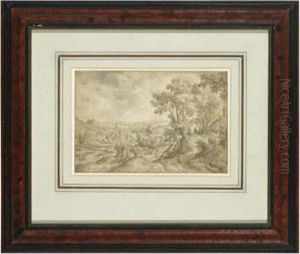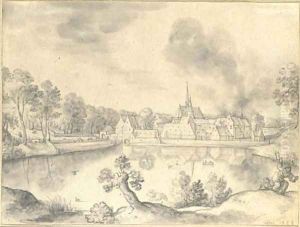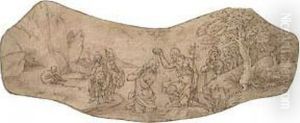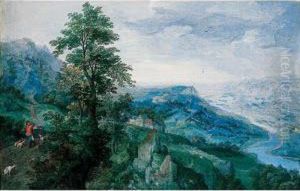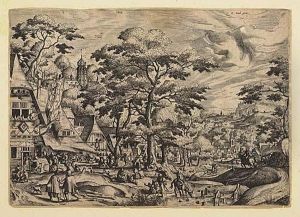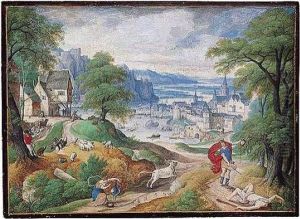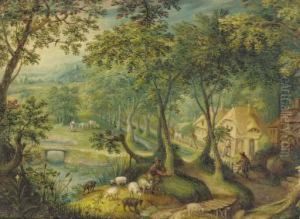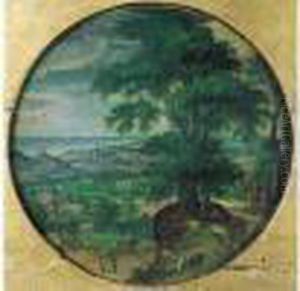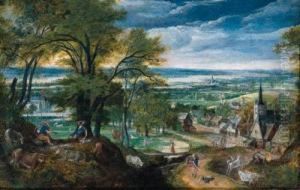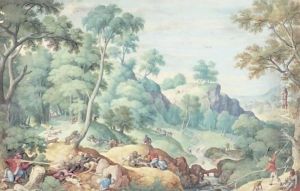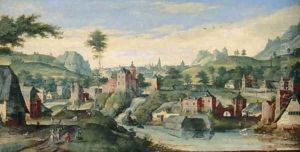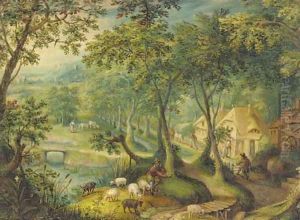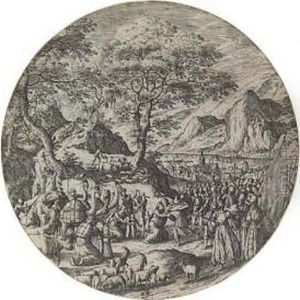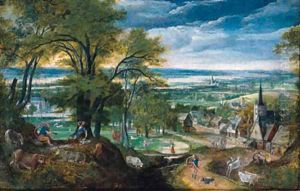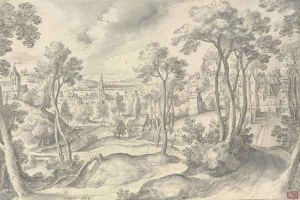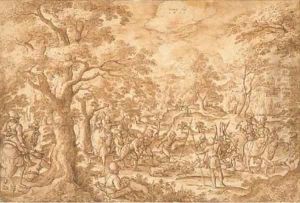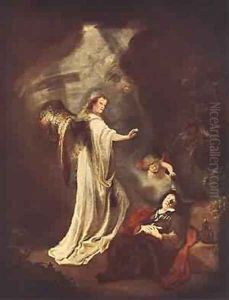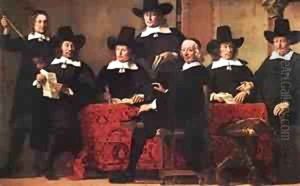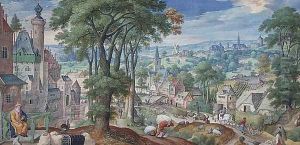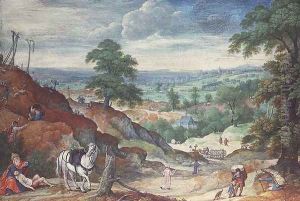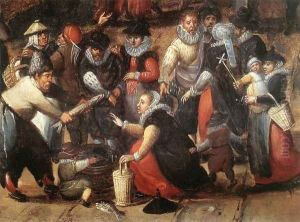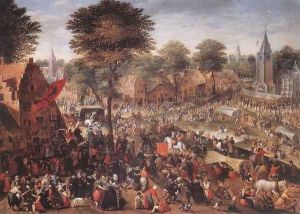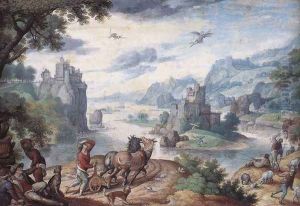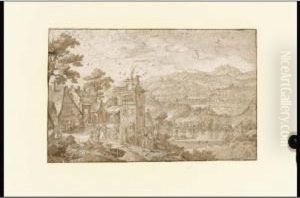Hans Bol Paintings
Hans Bol was a Flemish painter, draftsman, and print artist who is best known for his miniature landscapes and his work in watercolor and gouache. Born in Mechelen, now in Belgium, on December 16, 1534, Bol came from a family of artists and was apprenticed to landscape painter and printmaker Herri met de Bles. His early work was heavily influenced by another Flemish painter, Pieter Bruegel the Elder, who was known for his detailed landscapes and peasant scenes.
After completing his apprenticeship, Bol started his own workshop and gained a reputation for his small-format landscape drawings and paintings. In 1560, he became a master in the Guild of Saint Luke in Mechelen. The political and religious turmoil of the Dutch Revolt, which began in 1568, had a significant impact on Bol's career. In 1572, after the Spanish sack of Mechelen, Bol moved to Antwerp, which was then a major center of art and commerce.
While in Antwerp, Bol continued to develop his style, creating detailed and atmospheric landscape paintings, often populated with biblical and mythological figures. His work was highly sought after, and he produced pieces for affluent patrons, including Emperor Rudolf II. Despite his success, the instability in the region once more forced Bol to relocate, and in 1584, he moved to Amsterdam, where he spent the rest of his life.
In Amsterdam, Bol continued to work on his miniature landscapes and was also active as a teacher, passing on his techniques to the next generation of artists. He was known for his innovative use of watercolor and gouache, which allowed for a degree of transparency and luminosity that was not possible with oil paints. Bol's landscapes were characterized by their attention to detail, use of perspective, and the vibrant representation of the natural world.
Hans Bol died on November 28, 1593, in Amsterdam. His legacy includes not only his own work but also the influence he had on other artists in the realm of miniature painting and landscape art. Throughout his life, Bol exhibited a remarkable ability to adapt to changing circumstances and geographies, all the while maintaining a high level of artistic production that made him one of the leading landscape artists of his time.
